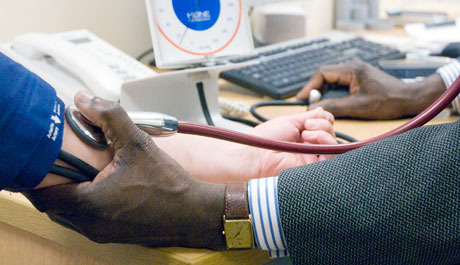Heart age tool is more heartache for GPs


This week saw furore surrounding the promotion of Public Health England’s online ‘heart age calculator’.
Whilst the popular press and politicians enthused about how this tool will help prevent heart disease, many GPs and other medical professionals were quick to point out that this seemingly laudable campaign had potential unintended, but not unforeseeable, negative consequences.
The aim of this campaign is to reduce the burden of cardiovascular disease. This is great; and familiar territory for GPs and PHE alike.
Telling people their heart age can be useful in encouraging people to engage in lifestyle change, and after calculating your heart age, the tool directs users to sensible lifestyle advice.
Cholesterol and blood pressure simply become a distraction from the main message
There is no harm in that, and it may indeed help motivate some people. However, the advice doesn’t stop there. The tool also encourages the user to ‘know your numbers’, and herein lies a problem.
The risk calculator asks for users to enter their cholesterol and blood pressure (BP). If they don’t know these values (and most won’t), the population means will be used instead. This will give a fair estimation of the risk given that, for most people, BP and cholesterol won’t modify the risk significantly.
However, regardless of your demographics or predicted risk, if you don’t enter values for BP and cholesterol, the results page will strongly recommend that you see your GP to get these investigations done.
So even if you’re in your 30s with a 10-year CVD risk hovering under 1%, you’re advised to get your cholesterol and BP checked by your GP. How is this going to help? No values for BP or cholesterol will get your risk anywhere near the 10% threshold where statins may be offered.
If statins aren’t going to be offered then all we can do is reiterate the lifestyle advice already presented. The cholesterol and BP have simply become a distraction from the main message – a healthy lifestyle is the most important aspect of reducing your risk of CVD.
We, as GPs, already spend a lot of time delivering the NHS health check programme despite the fact that it probably doesn’t improve the population health significantly and is neither equitable nor cost effective. The last thing we need is more healthy people turning up to our consulting rooms asking to know their BP and cholesterol because the computer told them to in red capital letters.
Millions of people will use this calculator and PHE will parade this as a success. But no one will be counting the cost of the extra workload placed on the all-you-can-eat buffet of general practice.
So this seemingly benevolent campaign from PHE has missed the mark in my opinion. It should have stuck to raising awareness of CVD risk factors and providing solid lifestyle advice.
Instead, it may increase the unhelpful fixation on cholesterol and blood pressure and lead to potentially thousands of extra GP and nurse appointments in an already overstretched system with little or no benefit to patients.
Dr Samuel Finnikin is a GP in Birmingham
Pulse October survey
Take our July 2025 survey to potentially win £1.000 worth of tokens

Visit Pulse Reference for details on 140 symptoms, including easily searchable symptoms and categories, offering you a free platform to check symptoms and receive potential diagnoses during consultations.











